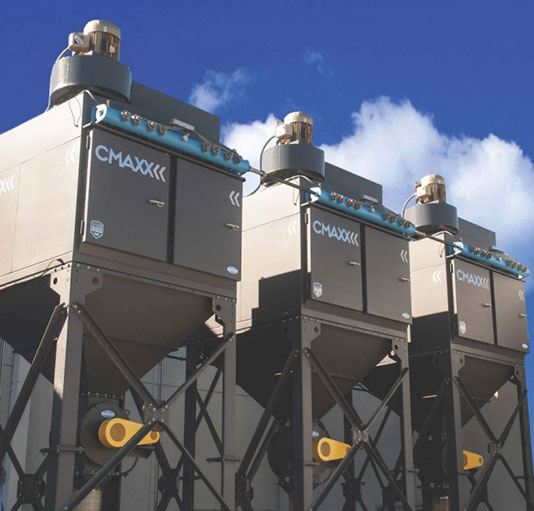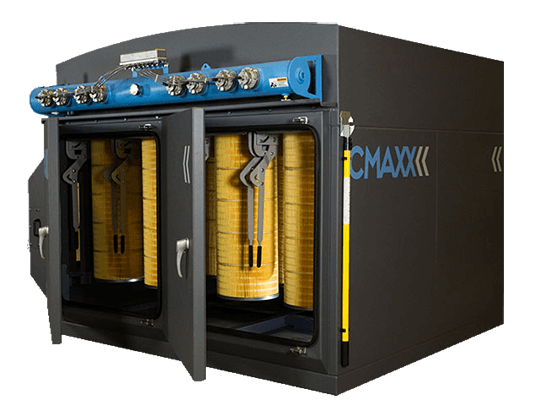Dust Collection Systems
Can You Afford to Risk a Dust Collection System Shut Down?
An unexpected dust collection system shut down can cause serious problems for your business including major expense and lost production. When investing in a dust collection system it is critical that you work with a highly experienced and knowledgeable expert who can deliver the solution you need. Cardinal Air understands all of the details involved in designing complete and reliable high-performance dust collection systems.
A Poorly Designed Dust Collection System Will Remind You of its Presence Every Day
Your dust collection system should be so quiet, so efficient, and so reliable that you actually forget it is there. Dependable dust collection systems begin with good design. A system that is well-designed operates quietly and efficiently in the background causing minimal disruption and expense for your business.
Effective Dust Collection System Design Based on Knowledge and Experience
Cardinal Air understands the importance of careful process evaluation, as well as system component sizing and selection. Improper sizing or miscalculations can lead to costly problems that compromise the entire system. Through our extensive industry experience and expert product knowledge, we engineer custom dust collection systems designed to the highest degree of accuracy for reliable and efficient performance.
Industrial Dust Collection
Complete Industrial Dust Collection Solutions Designed for Your Needs
The mission of Cardinal Air is simple – to provide quality, dependable industrial dust collection solutions that comprehensively meet the needs of every project we serve. For us, this means more that selecting the standard industrial dust collection equipment and designing a generic system. For our projects, we move beyond average expectations to deliver dust collection systems that are far superior in terms of design and performance. Specifying the industry’s best equipment is just the beginning.
When designing industrial dust collection solutions for our customers, we custom build complete systems to meet specific, individual needs. In order to design the most effective industrial dust collection solution for you we take the time to:
- Study your facility
- Understand the processes involved
- Analyze the related contaminants
- Calculate airflow and pressure drops
Drawing on the benefit of our extensive knowledge and industry experience, we are able to identify and evaluate options to deliver an industrial dust collection system that meets your needs and provides you with lasting value.
We believe that when you invest in Cardinal Air as your industrial dust collection solution supplier, we should invest only our best in your project.

Imperial Systems CMAXX™ Dust Collector System

Imperial Systems CMAXX™ Dust Collector System
What is Involved in the Dust Collection System Design Process
Type of Collector
The dust collection system design process begins with determining the best type of collector:
Cartridge Unit Bag Unit Light dust load Heavy dust load Fine particulate Sticky dust Dry, non-sticky dust Wet dust Free-flowing dust Fibrous dust Proper Sizing of Collector
Once the type of collector is selected it must be properly sized considering factors such as:
- Amount of filter area required
- Type of inlet used
- Physical configuration of unit
- Special requirements for protecting the collector
- Inlet isolation for deflagration
- Exhaust isolation
- Explosion venting or suppression
- Fire detection and suppression
Fan Selection
Proper fan sizing is critical. To properly size the dust collection system fan the required volume of air and static pressure must be determined. Air volume and pressure are calculated and based on:
- Hood design and application requirements
- Diameter of ductwork
- Length of duct in linear feet
- Number of elbows in duct
- Velocity of the air through the duct
The fan type (air foil, backward inclined, radial blade etc.) must be suitable for application.
Proper Duct Sizing & Selection
Ductwork is sized for a particular velocity of airflow. The type of duct (flanged, rolled lip, etc.) and material thickness must also be determined based on the application needs and demands.
Selection of Controls
The dust collector operation must be regulated using an electrical control panel. A number of factors must be considered in the control panel design process:
- Is the panel inside or outside
- Is the panel in a corrosive environment (salt, fertilizer, acid, etc.)
- Are there special requirements for the panel (must be rated for explosive gases or dust particulate in the environment)
- Are there specific components required by the customer (a specific manufacturer of PLC, or starters)
Required Ancillary Devices
Any necessary ancillary devices must be sized to handle the appropriate volume of dust. Unit construction material (stainless steel, carbon steel) must also be determined. The most typical ancillary items used are:
- Screw conveyors
- Airlocks
- Hopper vibrators
- Smoke detectors
- Backdraft dampers
- Abort gates
- Temperature detectors
Dust Collection System Installation
The performance and effectiveness of the dust collection system depends on proper installation. Factors to consider include:
- Safety protocol of the facility
- How to hang the ductwork
- Plant electrical requirements
- When installation work is permitted to occur
- How long can production be shut down to accommodate installation
Another installation consideration is the type of rental equipment permitted in the facility. Restrictions may include limitations such as electric only, LP, gas powered, diesel powered, or non-marking tire only.
Reliable Dust Collection Systems Engineered for Long-Term Performance
At Cardinal Air Design, we believe your dust collection system should be the quiet workhorse in your facility—unseen, unheard, and unfailingly effective. Based in Ohio, we design, install, and maintain high-quality dust collectors tailored to meet the specific demands of your application. Whether you’re dealing with fine particulates, fibrous dust, or heavy material loads, we deliver engineered solutions that perform reliably day after day.



